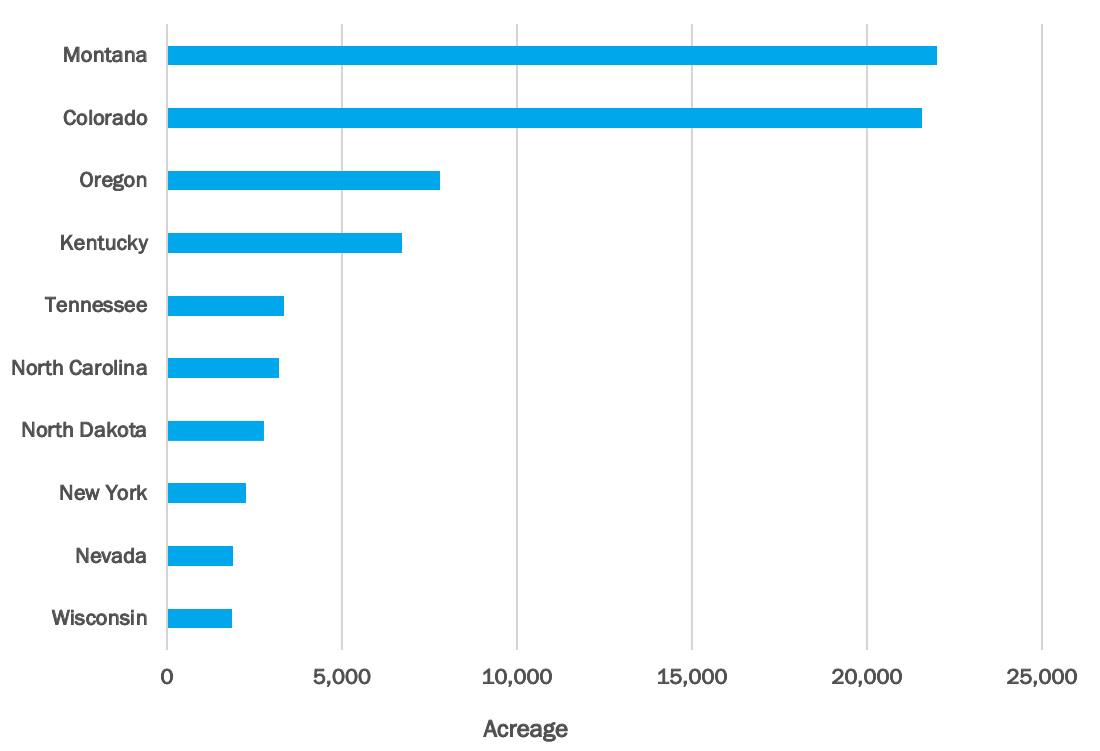Out of all the complex policy discussions in Washington, D.C., the future of legalized cannabis has come to the forefront. Debate swirls around how states can legally stand up medical or recreational markets while the federal government still holds back from legalizing cannabis. The implications of these state experiments pose more questions than answers for stakeholders working in commerce, finance, public health, legal compliance, and many other facets of public policy on the federal and state level.
Most recently, our team took a closer look at the newly legalized production of hemp, which was authorized with the passage of last year’s Farm Bill. In our first “Hemp State of Play,” reported by Politico’s Paul Demko, Natalie Fertig, and Mona Zhang, FTP provided a primer of all 50 states’ hemp markets within the local and national policy context.
Top 10 Hemp States in 2018

A quick review of the top ten hemp cultivation states illustrates how complicated legal cannabis regulations and statutes are across the country. For instance, within the ten states listed above:
- Only Colorado, Nevada, and Oregon have set up recreational and medical cannabis markets;
- Montana and New York have set up medical but not recreational cannabis markets; and
- Kentucky, Tennessee, North Carolina, and Wisconsin have not set up either medical or recreational cannabis markets.
Regulation of commercial hemp cultivation has reached a critical point. If handled wisely, imminent decisions at multiple levels of government could create opportunities for states to lead in the growth of exciting and new legal markets, including textiles, food, fuel, biodegradable plastics, and other industrial materials. However, poorly considered or loosely coordinated rules could lead to serious missteps within both federal and state regulatory structures.
FTP will be monitoring the emerging market and policy landscape closely. Issues we’ll be tracking include:
- State implementation: While the U.S. Department of Agriculture (USDA) will approve hemp plans and issue guidance this fall, states will have leeway to implement programs and create completely new regulatory structures. How those structures evolve and interact will preview a potential future for cannabis, cannabidiol (CBD), and a newly regulated type of farming and retail.
- Interstate commerce: In practice, as products begin moving across state lines, determining what is classified as hemp or cannabis while navigating across states with varying legal cannabis rules will be a multi-state, multi-agency issue. The ability of those authorities to effectively coordinate will have a direct impact on the trajectory of the industry.
- Public perception and safety: While the country’s perceptions about cannabis and hemp are evolving, issues including, but not limited to, quality, quantity, labelling, pesticides, and concentration remain unresolved. Implementation without pause for public safety issues and accountability could create backlash as health regulations must be addressed in a consistent and thoughtful manner.
To download our full report on hemp farming, visit here.
